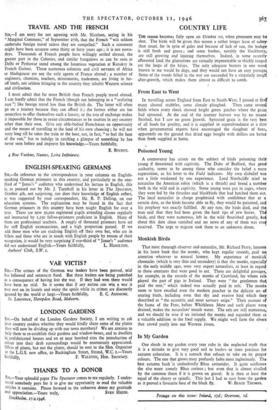Monkish Birds That most thorough observer and-naturalist, Mr. Richard Perry,
laments in his latest book that the monks, who kept regular records, paid no attention • whatever to natural history. My experience of monkish chronicles (which is very thin and secondary) is that the monks, especiallY in the early middle ages, were very expert naturalists, at least in regard to those creatures that were good to eat. There are delightful passages; for example, in the records of the monks of Crowland, for whom eels played the part of pigs in Ireland. They were "the gentlemen that paid the rent," which indeed was actually paid in eels. The monks seem to have excelled even the modem poacher in the delicate art -of snaring birds, including even that shy and evasive bird which they described as "the eccentric and most savoury snipe." Their account of the fauna of the Fens, before Whithlesea Mere and such places were, drained, makes the naturalists' mouth water. The eels are still numerous; and we should be wise if we imitated the monks and regarded them as a valuable addition to the food supply. We might well farm the elvers that crowd yearly into our Western rivers.






























 Previous page
Previous page